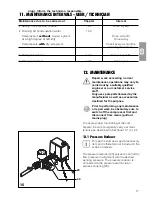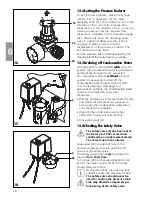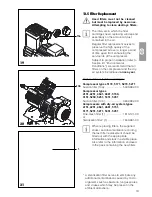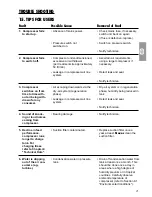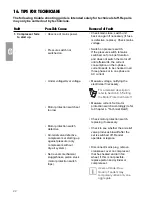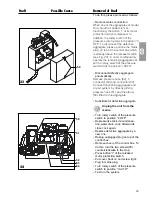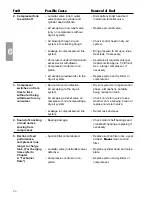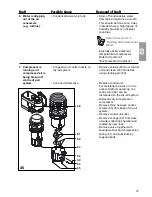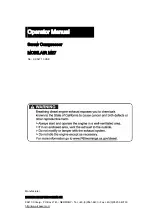
11
Fire Hazards!
8.2 Compressed-air Connection
A standard feature of the compressor is a
control unit comprising the following:
pressure switch (11), safety valve (6),
compressed-air connection coupling (20) and
pressure gauge (7).
• Slip flexible pressure hose (ø 8x3x14) onto
connecting socket of pressure reducer and
secure with hose clip (21) to prevent
slipping off.
A flexible pressure hose fitted between
the firmly installed compressed-air
tube and the compressor serves to
prevent transmission of vibration and
thus reduces noise.
8.3 Electrical Connection
Connection up to the voltage supply
system may only be carried out by a
suitably qualified electrician
(with exception of those stations
supplied ready for plugging into an
earthing-contact type socket or CEE
socket, depending on the version of
the compressor).
The 400 V version of the compressor is
supplied fitted with a CEE connector, and the
230 V version with an earthing-contact type
plug. The regulations of local power supply
companies must definitely be observed.
The mains voltage and frequency must conform
to the data specified on the rating plate.
No connecting cable must be
allowed to run across the unit. The
hot surfaces of the compressor
might otherwise cause damage to
the cable insulation.
• If the unit is permanently connected up to
the voltage supply system, provision must
be made for a power disconnecting device
with a contact opening width of at least
3 mm (e.g., a power circuit breaker).
• If the unit is connected up to the voltage
supply system by means of a plug-type
connector, ease of access must be provided
to the socket for safety reasons, enabling
the unit to be disconnected safely from the
mains in cases where danger situations
arise.
• The corresponding circuit must be protected
by a fuse consisting of an LS-switch10 A
(characteristics B, C, and D) supplied and
20
21
11
7
6
4
3
5

















